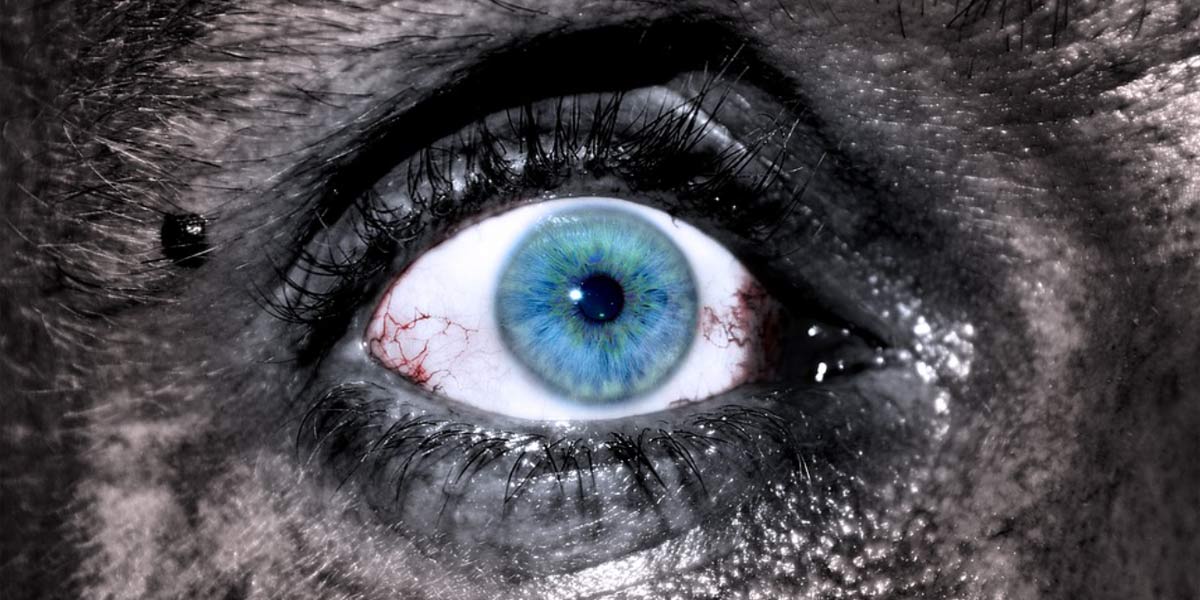The Man Who Kept Seeing Rainbows
You can see too many rainbows just like you can see too much sunshine. Too much of a good thing can be poison.
By ![]() Jim Goad
Jim Goad
Wally Bladders, a house inspector from Schwenksville, PA, was a simple man with a nose that was just a tad too large and lumpy for his face. Wally took life easy and avoided going to extremes. He’d always heard that all good news also brought bad news, and that if every cloud had a silver lining, that also meant that every silver lining had a cloud. You take the good with the bad and the ups with the downs and the wrongs with the rights. That’s life. And life never ends well.
He had the house he always wanted and all the electronics devices he needed. He’d been divorced for two years and hadn’t been laid in five. He still was friendly with his wife, Mavis Bladders, and his two adult children, Ernie and Tina Bladders, but it all felt cold and hollow to him. His life was full, but he felt empty inside.
Wally couldn’t remember exactly when he started seeing rainbows. If he had to hazard a guess, it would have been around three weeks ago. It felt like a year, though. He’d grown to wish he’d never started seeing them at all. In fact, he prayed that he’d stop seeing them soon. You can see too many rainbows just like you can see too much sunshine. Too much of a good thing can be poison.
But the rainbows never went away. There they were, hanging right in front of his eyes. Not in the distance over the horizon like a normal rainbow—this was as if some prankster had crept into his bedroom while he was sleeping and slipped on eyeglasses that imposed electric rainbows between his eyes and the world, almost as if they were trying to block his view of the world. These were sort of like rainbow-colored eye floaters. These rainbows didn’t form a neat arc like rainbows usually do—they had jagged edges like a starburst and pulsated brightly like a neon sign.
He usually liked looking at rainbows. But not now. Although, sure, rainbow colors are pretty, these intruder rainbows made it impossible for him to do basic things such as reading or driving—the jagged rainbow got in the way. So even though it might seem like a nice thing to always be staring at rainbows, it became a slow torture for poor Wally Bladders. How could he, as a house inspector, determine whether a house had black mold if there was a rainbow blocking his vision?
After three weeks of nonstop rainbows, Wally decided to go see his doctor. It was a sunny day—at least from what he could see beyond the rainbow. But he also saw the rainbow on rainy days. Who sees rainbows when it’s raining? He did. He even saw the rainbow when he closed his eyes.
Aldus Bismol had been Wally’s personal physician for the better part of forty years. Nearing retirement age, his hands were a liver-spotted minefield and his what remained of his hair was a pathetic, horseshoe-shaped grey puff ringing the back and sides of his skull. The top of his head was as clean and shiny as a peach-colored bowling ball.
Wally explained to Dr. Bismol that he’d been seeing rainbows for nearly a month, whereupon an MRI was ordered of his brain. This surprised Wally, because he figured it was a problem with his eyes instead.
But Wally kept the appointment, stripping down to a hospital gown as they shoved his head inside the giant white steel cold donut and commanded him to cease even batting an eyelash for the next twenty minutes as his ears were assaulted by a relentless barrage of shockingly loud and inhumane industrial noises signaled that this evil machine was scanning his brain.
Ten days later, Wally’s cellphone rang. It was Tila, the receptionist at Dr. Bismol’s office, telling him to come in at his earliest convenience. Wally stood up, turned off his TV, put on some pants and shoes, and drove straight over to the doctor’s office.
“Is everything OK?” he asked Tila, panting heavily upon his arrival.
“Dr. Bismol has one patient ahead of you—he’ll be with you any minute,” Tila said, avoiding eye contact.
As Wally was ushered into an examination room, he strained through the rainbows and noticed that the office seemed dingier, dirtier, and older than he’d remembered it.
After a long wait during which Wally paced the room the entire time, Dr. Bismol finally entered, chart in hand, all business.
“Mr. Bladders? What you’re seeing aren’t technically rainbows. It’s known as a migraine aura.”
“So this is just some kind of headache?” Wally asked, slightly relieved.
“That’s how it presents,” Dr. Bismol replied, staring straight down at his chart. “As a jagged, bright, but sort of transparent rainbow. But what you’re seeing isn’t the problem—it’s only a symptom of the problem.”
“The problem?”
“Your MRI suggests you have a glioblastoma. That’s a brain tumor.”
“A brain tumor?” Wally gulped.
“I’m afraid so. Size of a walnut. Right in the center of your brain. It’s what’s causing the migraines and the attendant visual effects. I’m having Tila schedule you for surgery.”
“But rainbows are usually a sign of hope.”
“Usually.”
“Rainbows are good.”
“After it rains, they are. But this is a sign of something that’s not good. Quite the opposite, unfortunately.”
“Rainbows usually mean the bad weather is over, not that it’s just beginning and is going to get worse.”
“Usually.”
“I can’t believe this. This is crazy. What’s next—I start seeing angels?”
“Based on the size and type of your tumor,” Dr. Bismol sighed, “I would say that’s a distinct possibility.” ![]()


